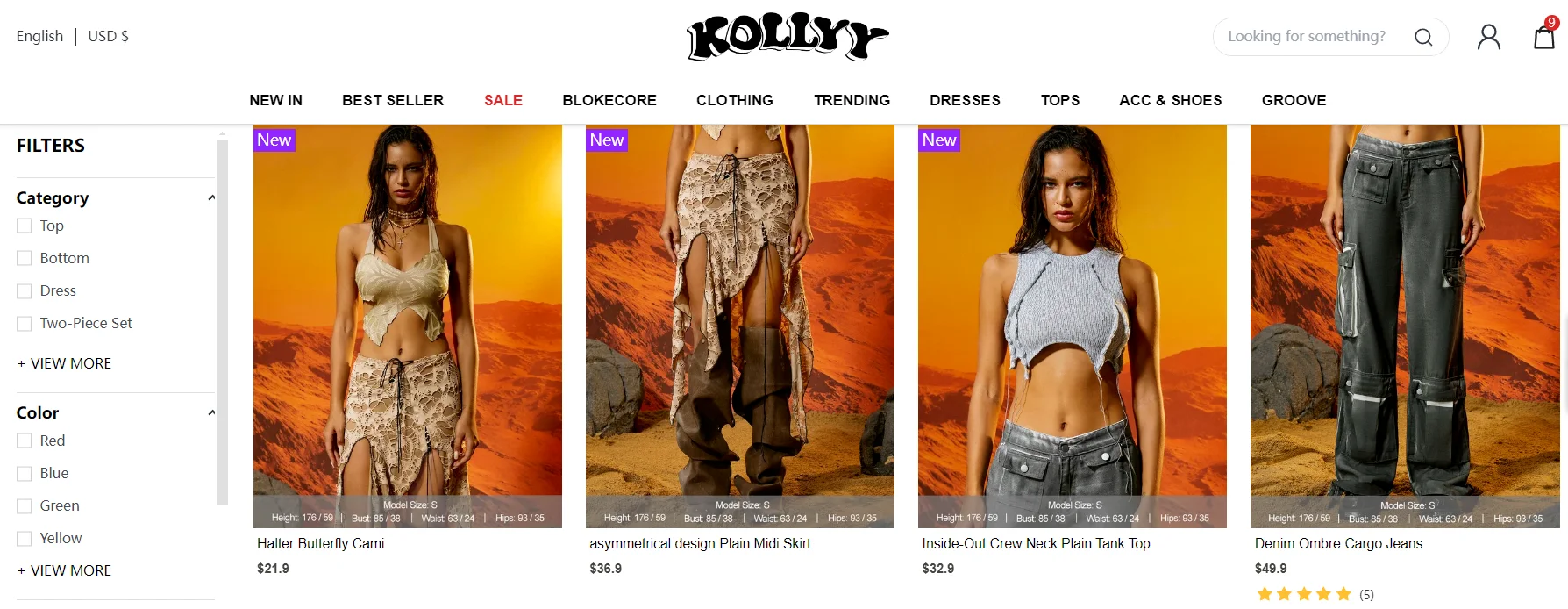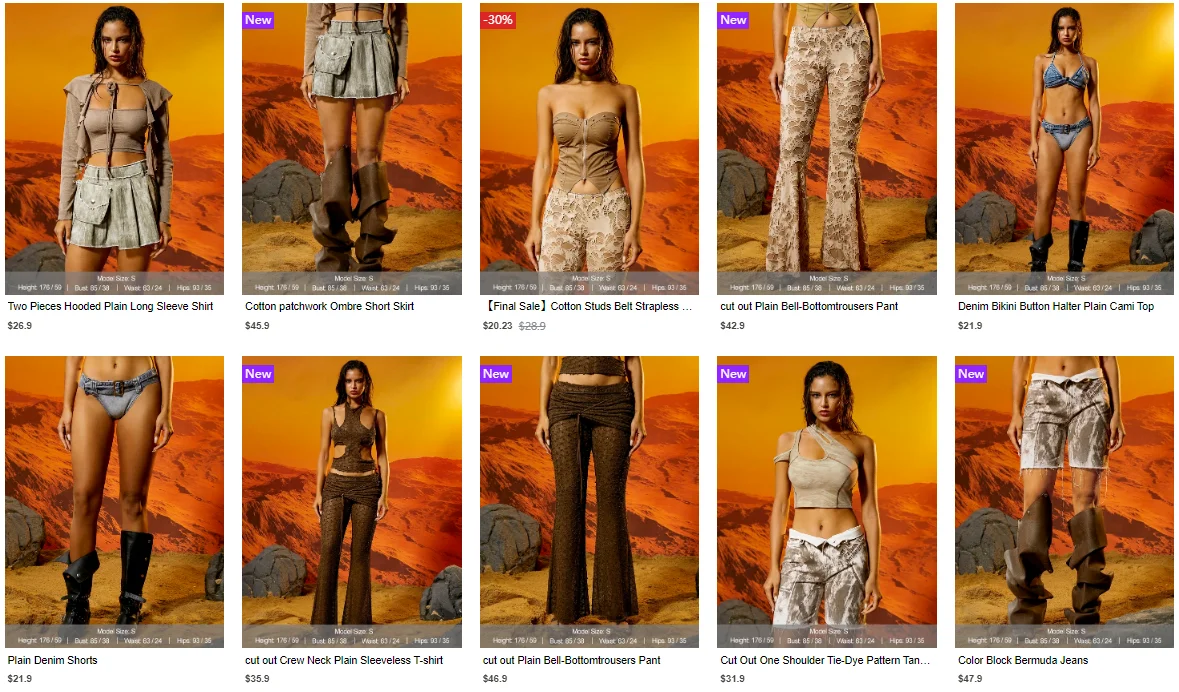Dune Movie Fashion Aesthetics Outfits
Dune Movie Fashion Aesthetics: Military Uniforms, Religious Inspiration, and Wasteland Outfits
The movie Dune 2 premiered in London on February 16. Director Denis Villeneuve led a group of leading actors to attend the event.

As the movie Dune Part 2 is released on March 1, the costume design in the movie has attracted the attention of the fashion industry. In 2021, Dune 1 won praise from the audience because of the beautiful images, extraordinary background music, and the different styles of costumes in the film.
Online comments about the film often describe it as Wasteland style, but not all scenes in the movie fit this description. When looking back at the uniforms designed by Jacqueline West in "Dune 1", they can be roughly divided into three types:
Atreides & Harkonnen Warlord Uniforms
They are all fashionable versions of standard military uniforms: stiff fabrics, well-fitting cuts, clear silhouettes, and mostly long styles. The most well-known styles in the fashion world are Burberry's trench coat (originally actually used on the battlefield) and Dior Homme's Napoleon jacket. The former has become a classic, and the latter has become one of the representative works of designer Hedi Slimane and his slim aesthetic.
Trench coats and similar warlord garb are standard wear for the most sinister characters in art, literature, and film, connoting class distinction and body-shape-defining waist/shoulder padding, and associated with technology, survival, danger, cities, violence, and Sex-related items, especially leather ones, will deepen this “evil” perception.
Peter Devoe, the villain of the Harkonnen family, wears a collarless leather coat when he appears. Out of this "serious, cold, disciplined" feeling, pioneer brands are keen on making similar styles, such as Ann Demeulemeester, Carol Christian Poell, Gareth Pugh, etc.
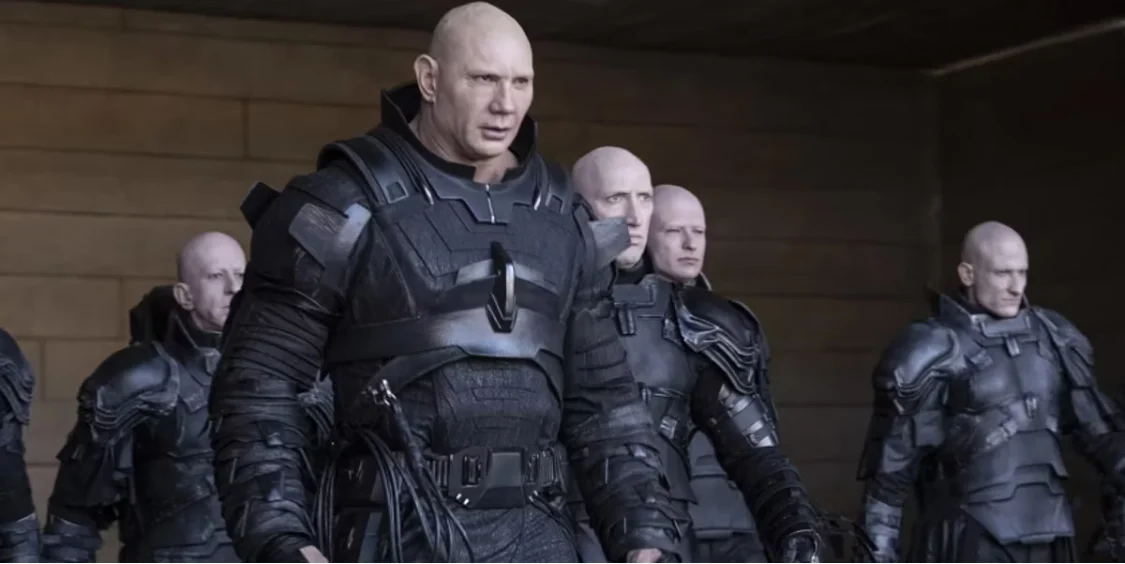
Bene Gesserit Sisterhood Robe/Skirt
After the movie was released, many fashion lovers felt that the costumes had a sense of familiarity with Rick Owens. In my opinion, there were only sorority costumes (inspired by medieval nuns) and the main character’s mother, Jessica, who looked like a snake goddess from ancient Egyptian mythology. The golden dress (Jacqueline said it was the most expensive dress in the show) is in line with Rick Owens's peak women's image.
Originating from Owens's childhood experience in Catholic school, even though he does not believe in any religion, his shows are full of religious elements. He simplified the attire of priests, monks, and priests and adapted it to his use (the off-white drawstring at the waist of Rick Owens' clothes originated from the lace of priest's clothes), and described his models as "priestesses of desire." Owens made dark fashion popular in the mainstream fashion market.
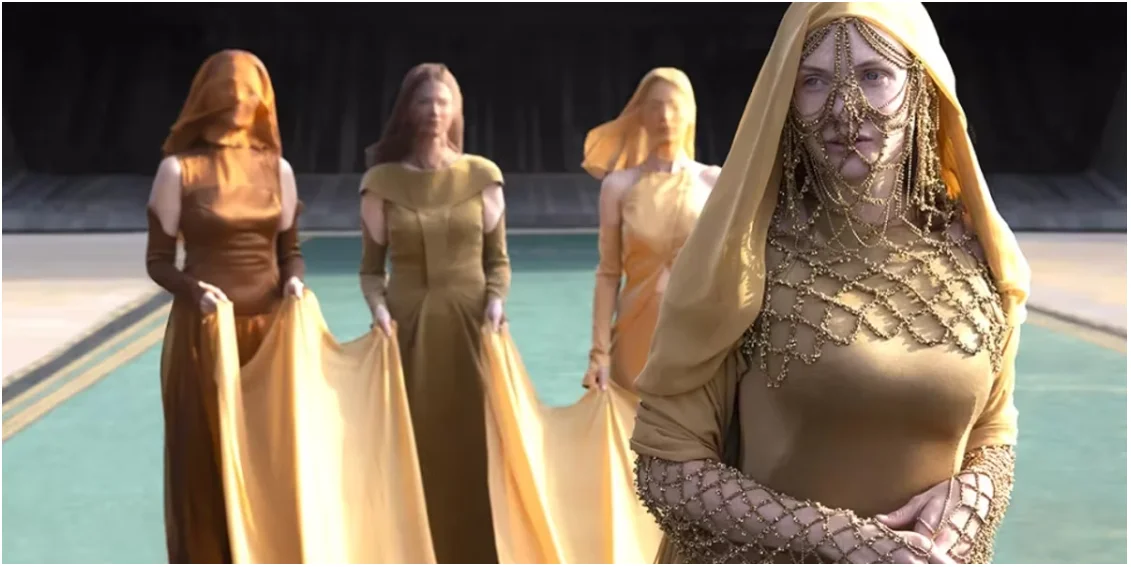
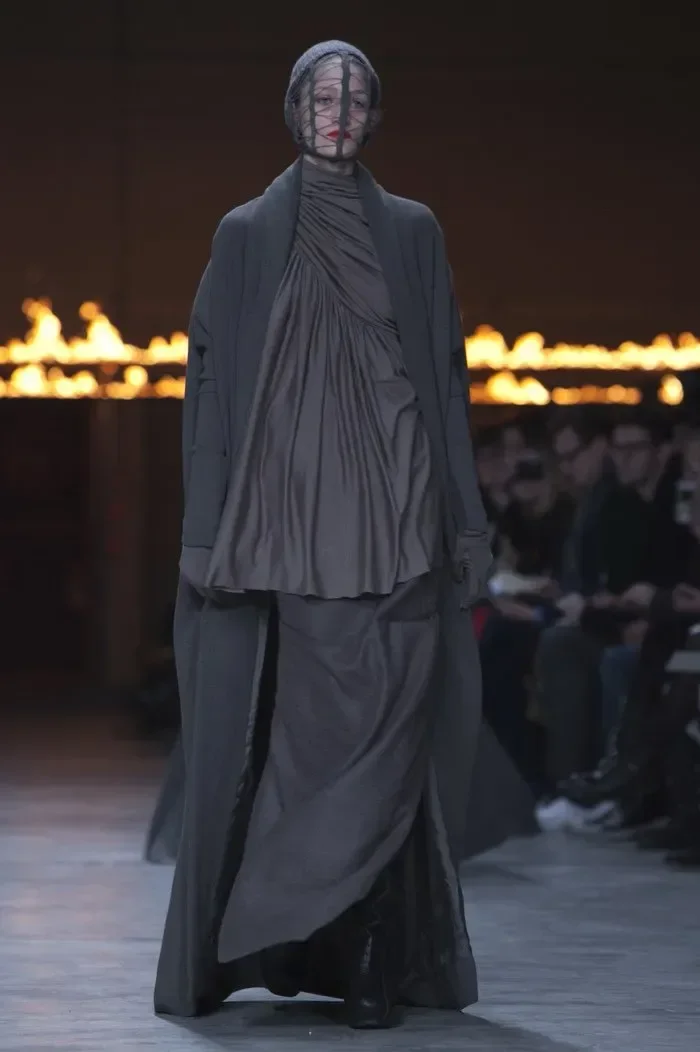
Fremen survival kit
We need to discuss "Wasteland" first. In wasteland-themed works, the background is usually that the environment has been severely damaged after human civilization experienced large-scale disasters. Human beings need to adapt to harsh environmental conditions through technological transformation and other methods and struggle to survive.
Under the influence of "Mad Max 2", the specific environment involved in "Wasteland" has been subconsciously conventionalized by the public as "desert". Similar to "Cyberpunk", "Wasteland" also has a highly controlled future. Social context and dystopian social state. Therefore, the Fremen costumes in the film, which are covered with gauze and need to rely on still clothes to survive, which is in obvious contrast with the elite uniforms of the Atreides family, are true "wasteland style".
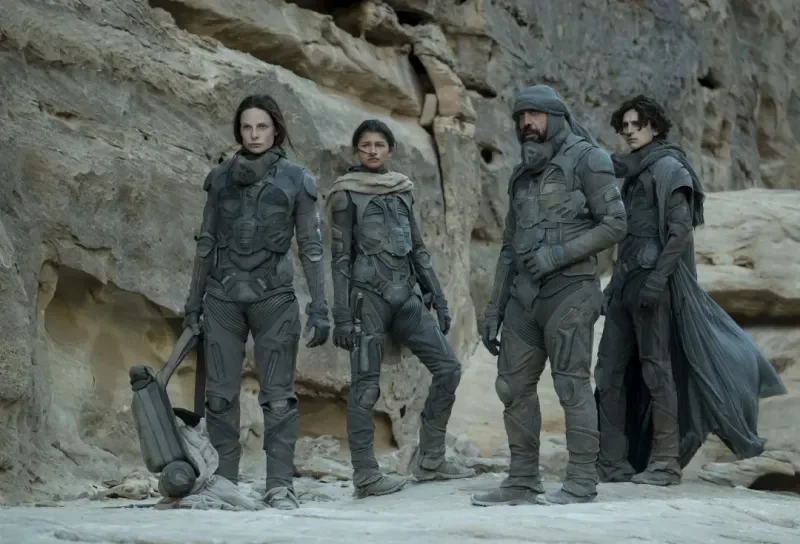
Based on the Fremen survival suit, the characteristics of "wasteland style" clothing can be roughly summarized:
(1) Reflecting the technological equipment that maintains physiological functions/combat performance in the desert environment, this functionality can be reflected by using technological fabrics or transforming the shape of technological equipment into clothing;
(2) In the wasteland world, even if high-tech equipment exists, loose traditional desert clothing such as veils and draped robes are still needed for shelter and warmth to reflect the "high-tech, low-life";
(3) Reflecting the long-term struggle for survival in the dry climate of the desert, such as gauze fabrics, broken/torn/patched, and other large areas of strong distressing, irregular tailoring and structure, earth tones, and irregular colors for easy camouflage. Uniform dyeing, etc., or based on characteristics (1), use metal oxidation color to reflect the long-term use of technological equipment;
(4) Use tight-fitting clothing with a certain degree of restraint to show a strong body and emphasize the concept of "survival of the fittest".
Regarding the movie Dune, we have to discuss the singer and Musk's ex-girlfriend Grimes. She wore a custom dress by Iris Van Herpen to kill everyone at this year's Met Gala (she called it Dune style), and the mask part was From Dune. The Dune movie official hoped that she would cooperate with it as a top fan or promoter, so with her help, the Bulgarian brand Demobaza, which has been insisting on making wasteland style clothing since its establishment, officially linked up with Dune.
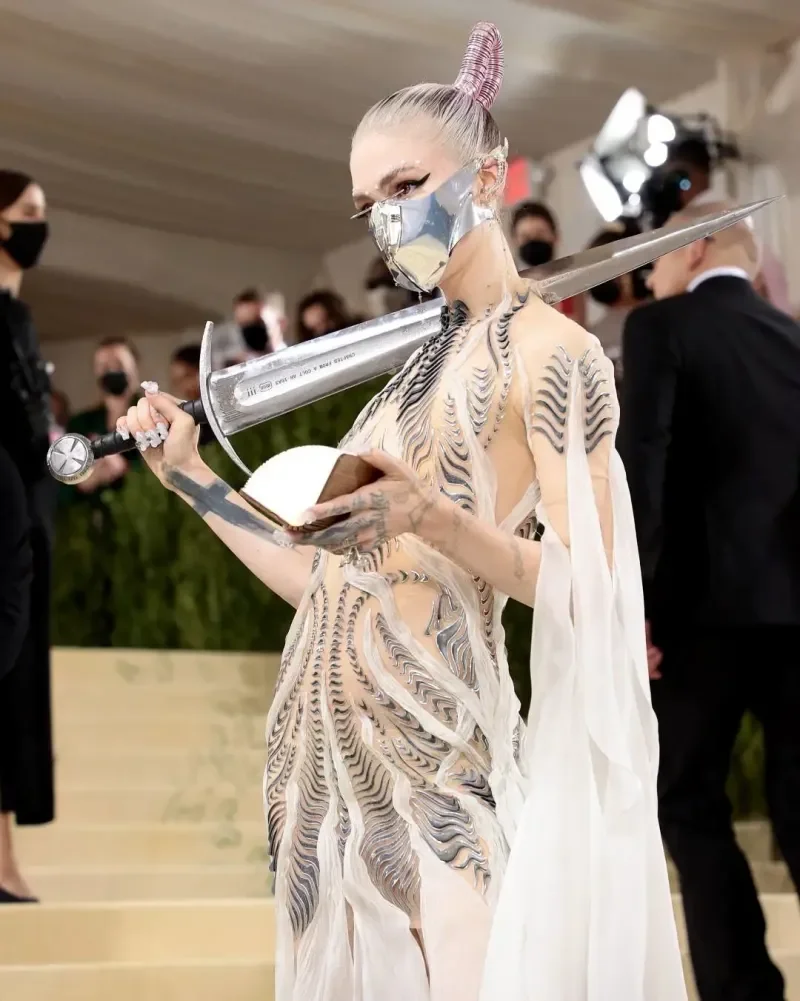
Demobaza uses the concept of deconstructed military uniforms to give the garments a minimalist and futuristic look, expressed through deconstructed kinetic silhouettes. Based on satisfying all the above-mentioned wasteland style characteristics, the brand's iconic feature is to integrate functional components, metal armor, joints, cushions, and other parts of technological equipment into clothing with a large number of live pleats, fabric textures, and exposed Seams, Velcro straps/lacings for easy on and off, etc. are vivid and extremely complex.
It seems that "fabric" is used to replace "metal components" to create imaginary "technical equipment". These are all vividly reflected in the brand's collaboration with "Dune", which seems to be a minimalist version of the distillation suit in the film.
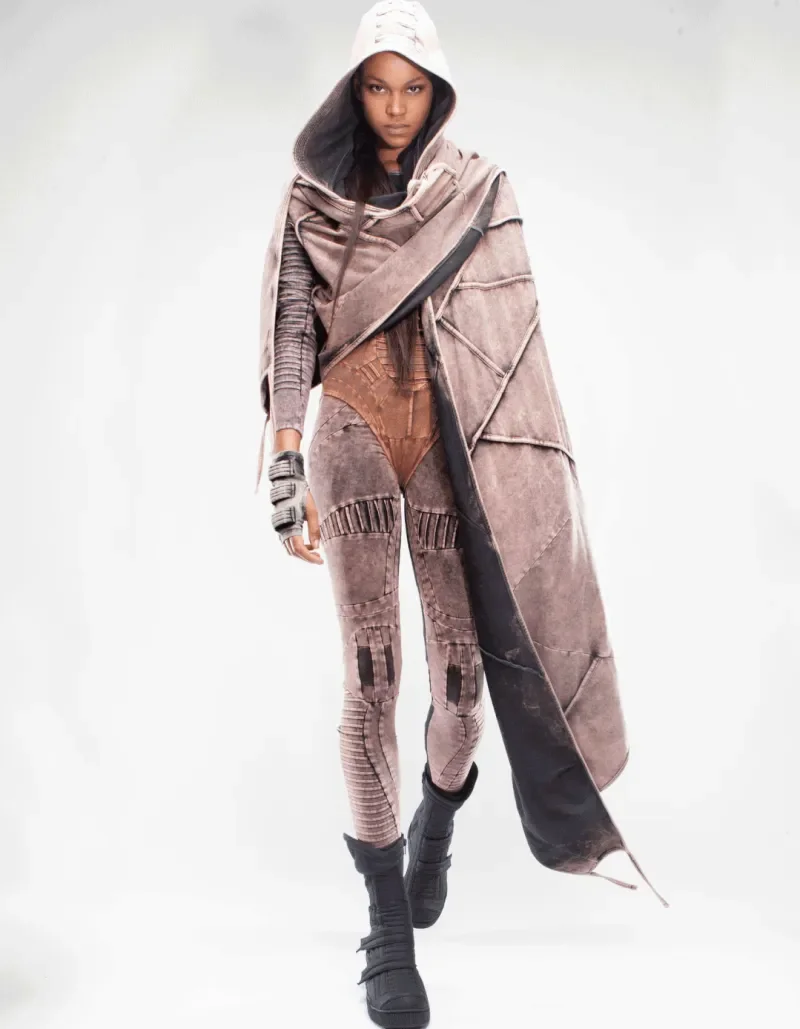
Many brands that only meet the characteristics (3) are often dubbed "wasteland style", such as Greg Lauren, who dismantled military uniforms, tents, and other military materials from World War II, destroyed them, and then created new ones, or combined them with other materials Splicing; partially dismantling and reconstructing different styles of recycled vintage clothes into new styles, while retaining the iconic features of the original clothing and the approximate original position of the pieces.
One piece of clothing can show the "wearing two or three pieces of clothing and then changing from gunfire to The apocalyptic image of "coming out of". But its core concept is "sustainability", and it goes even further - he launched the "GL Scraps" project in the AW20 quarter, cutting the leftover materials generated in the process of remaking vintage clothes over the years into 6×6 squares and using The quilting process is spliced and pressed to form a complete fabric; the "GL Stitch" of the AW21 season reuse the leftover materials from the GL Scraps production process to make fabrics, even if they are so small that designers who pursue "sustainability" will be considered as waste.
In contrast, the characteristics of the modified finished product given to the fabric by using military vintage items (the old military green that has been worn for many years, the splicing of different styles, etc.) are just an incidental result.
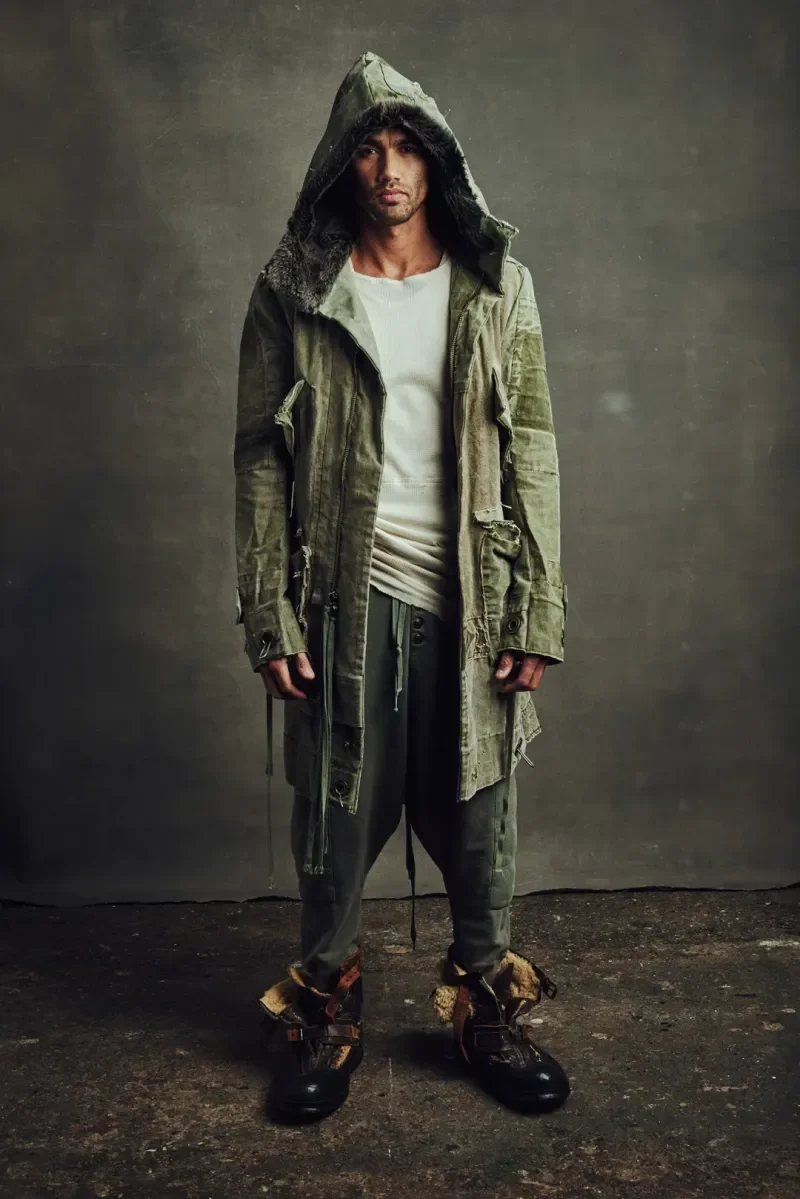
Some brands are not called "wasteland style", but have obvious wasteland elements. For example, Boris Bidjan Saberi will abstractly express the "exoskeleton" on his clothing through tape seams and overlapping fabrics at the spine. In the early days of the brand, Saberi established his own unique "Persian nomadic" style with a large number of natural fabrics that wrapped the body and various novel treatments. And he is indeed half Persian. He always wears a face mask and makes three pieces every time. The clothes all have a face protector.
Saberi is a dyeing madman, and object-dyed is one of her favorite dyeing techniques. In short, it means that the dyeing step that should be done after the leather tanning/cloth weaving is completed is replaced until the end. , washing, distressing and dyeing are carried out at the same time to produce leather/cotton finished products with various mottled textures and uneven dyeing.
He always worked by hand, using substances such as oil, sand, wax, or nails mixed with dye. From the "brown with yellow" rust that fades due to metal oxidation in the SS17 series to the nearly Tiffany-colored basic copper carbonate produced by copper oxidation in the AW19 series, his color palette stems from his observation of the details of life.
At the same time, Saberi's show is also building a universe of his own, in which many tribes adapt to survive in different extreme or harsh environments. They go on arduous expeditions for their beliefs: not only desert fanaticism but also extreme freezing, glaciers, deep forests, snowy mountains, damp caves, etc.
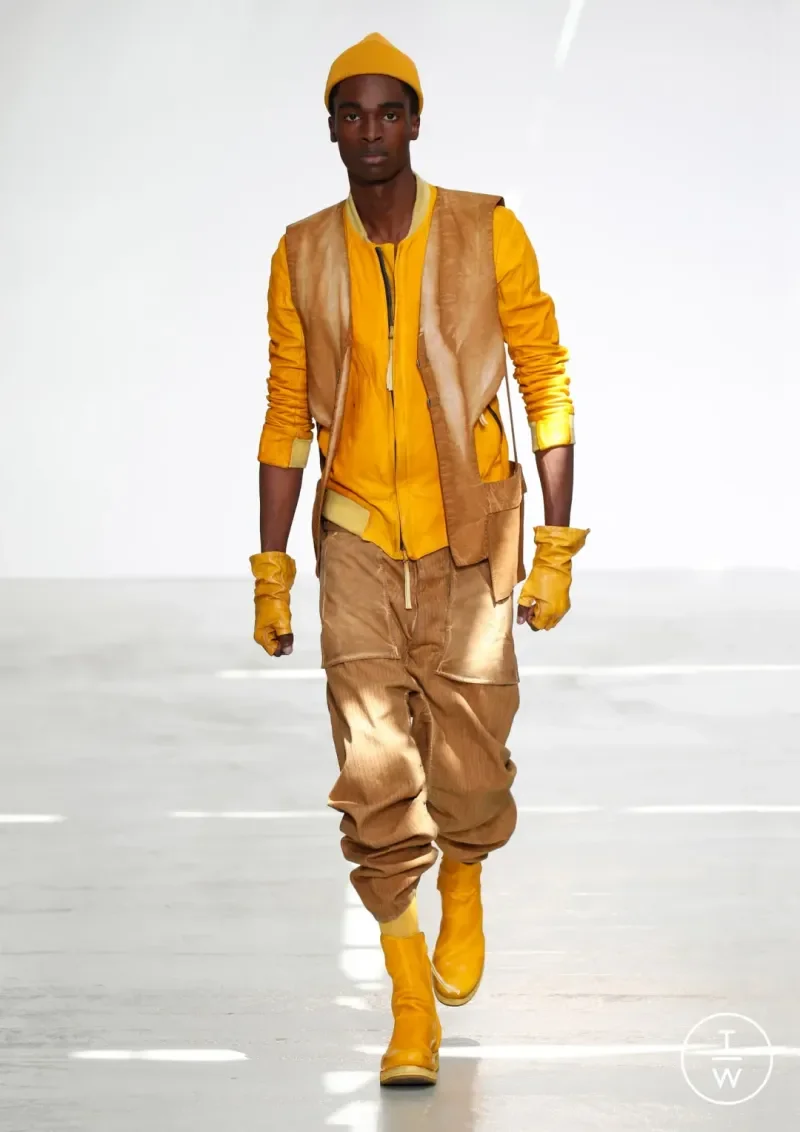
A niche Genz brand KOLLYY. Recently, they have also launched a women wasteland-style clothing collection. Through the collection of wasteland products, you can see that the clothes are well-matched with tops and bottoms. The brand's clothing style is more youthful and popular and is suitable for the Clothing needs of modern young people.
Finally, the above three types of visual images in "Dune" were all collectively referred to as "Dark Pioneer". However, the author feels that "dystopia" is more in line with the description of this type of visual image, which can include wasteland, cyberpunk, goth, religion, and the use of all the things that are ignored in life and are regarded as "shabby, dirty, and dirty", disgusting, etc.” and are presented on the clothing. Opposing beautiful things and forming aesthetics, isn't it similar to a kind of incomplete beauty?
What are the "Dark Pioneer" costumes we know that are not based on the "flaws" of ordinary costumes? Just like Martin Margiela's "deconstruction", when these "flaws" are simply regarded as a visual image, they are easy to be caught in routines and simply copied: Raw Edge, fringed hem, pleated skirt, various dyeing methods Old...thus ignoring the complex craftsmanship behind it and what the designer wants to express through it.
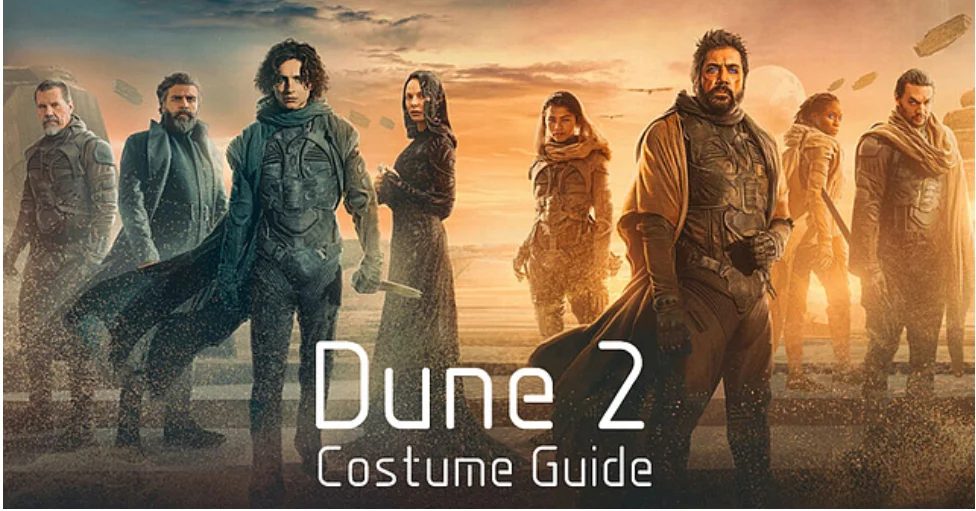
So with the popularity of "Dune 2", can this "dark pioneer" aesthetic be brought back to the mainstream? The answer is no, after all, even the former style representative Rick Owens has changed his visual image. Think about it again.
Ten years ago, the "streetwear" recognized by fashionable people was Bape hoodies + Evisu large M jeans + AJ/AF1. Is the current "street wear" still like this? In the same way, "dystopia" may make a comeback, but it will no longer be the "dark pioneer" visual image we have seen. Some style images will become "black history" that people are ashamed to wear again, while some are still applicable to the present, but the audience is getting smaller.

